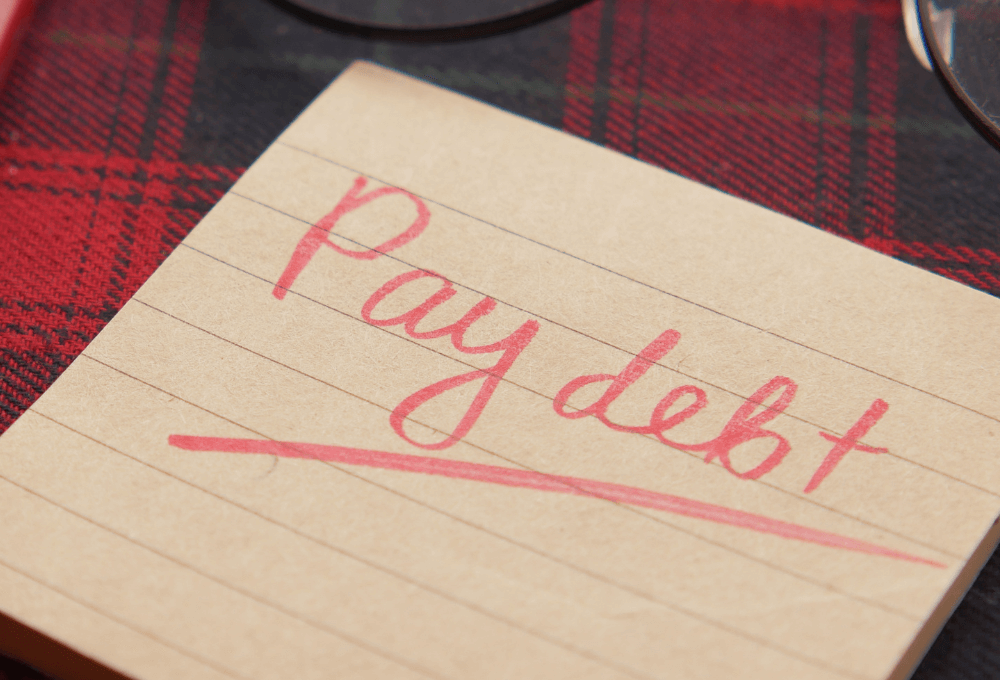Are you a student and dealing with a lot of student loan debt? You’re not alone. The amount of debt students in the United States have taken on is staggering. But, don’t worry, there are viable ways to help you control your debt and eventually get out from under it for good. Whether you’re looking for long-term or short-term relief, we’ve got you covered with an all-encompassing guide to understanding your options for debt relief. Read on to discover what these strategies are and how they can benefit you!
Introduction: What is Student Loan Debt?
Debt relief for students can come in many forms. The first step is understanding your options and finding the best solution for your unique circumstances.
There are four main types of student loan debt: federal loans, private loans,Parent PLUS Loans, and Perkins Loans. Each type of loan has different terms and conditions, which you should familiarize yourself with before making any decisions.
Federal loans are made by the government and offer a fixed interest rate, as well as income-driven repayment plans and other benefits. Private loans are made by banks or other lenders and usually have variable interest rates. Parent PLUS Loans are taken out by parents or guardians on behalf of their dependent children and have a fixed interest rate. Perkins Loans are need-based loans that have a lower interest rate than other kinds of loans.
No matter what type of loan you have, there are several options for debt relief. You can consolidate your loans, which will lower your monthly payments and make it easier to keep track of your debt. You can also refinance your loans, which will get you a lower interest rate and could save you money in the long run. Another option is to enter into an income-driven repayment plan, which will lower your monthly payments based on your income level. There are also loan forgiveness programs available for certain types of borrowers, such as teachers or public servants.
If you’re struggling to repay your student loans, debt relief may be the best solution for you. Speak with
Understanding Different Types of Student Loans
Different types of student loans can be confusing for borrowers. There are federal student loans, private student loans, and consolidation loans. Each type of loan has different repayment terms, interest rates, and eligibility requirements.
The best way to understand your options is to speak with a financial aid advisor or an experienced student loan lawyer. They can help you determine which type of loan is right for you and offer guidance on repayment options.
Refinancing Student Debt: Benefits and Risks
There are many ways to get relief from your student loans, but refinancing is one of the most popular options. It can be a great way to save money on interest, lower your monthly payments, or both. But like any financial decision, it’s important to understand the pros and cons before you decide if refinancing is right for you.
Benefits:
-You can save money on interest: When you refinance, you may be able to get a lower interest rate than what you’re currently paying. This can help you save money over the life of your loan.
-You can lower your monthly payments: If you have a high-interest rate loan, refinancing can help you lower your monthly payments. This could free up some cash each month that you can use for other things.
-You can consolidate multiple loans into one: If you have multiple student loans, refinancing can help simplify your life by consolidating them into one loan with one monthly payment. This can make it easier to stay on top of your finances and budget each month.
Risks:
-You could end up paying more in interest overall: Even if you get a lower interest rate when you refinance, if you extend the term of your loan (i.e., the number of years until it’s paid off), you could end up paying more in interest over the life of the loan than you would have with your
Consolidation vs. Refinancing: What’s the Difference?
There are two main options for dealing with student debt: consolidation and refinancing.
Consolidation:
With consolidation, you essentially combine all of your loans into one single loan. This can be beneficial because it often results in a lower monthly payment. Additionally, it can make things simpler from a logistic standpoint because you only have to make one payment each month (as opposed to multiple payments). However, consolidation is not right for everyone. One potential downside is that you may end up paying more interest over the life of the loan because you extend the repayment period. Another thing to keep in mind is that consolidation only makes sense if you have multiple loans with different interest rates. If all of your loans have the same interest rate, there’s no benefit to consolidating them.
Refinancing:
This new loan will likely have a lower interest rate than your existing loans, which can save you money over time. Additionally, refinancing gives you the opportunity to choose a different repayment plan that works better for your budget. For example, you could choose a shorter repayment period so that you can get out of debt sooner. However, like consolidation, refinancing is not right for everyone. One potential downside is that you may lose access to certain benefits
Student Loan Forgiveness Options
For many students, the thought of taking on thousands of dollars in student loan debt can be daunting. Fortunately, there are a number of options available for student loan forgiveness. In this section, we will take a look at some of the different ways you can get your student loans forgiven.
One option for student loan forgiveness is to work in certain public service jobs. If you have been working in a public service job for at least 10 years, you may be eligible for the Public Service Loan Forgiveness Program. This program forgives the remaining balance on your Direct Loans after you make 120 qualifying monthly payments while working full-time for a qualifying employer.
Another option for student loan forgiveness is to apply for an income-driven repayment plan. These plans are designed to make your monthly student loan payments more affordable based on your income and family size. Under these plans, your remaining student loan balance may be forgiven after 20 or 25 years of payment (depending on the plan).
There are also a number of other ways you may be able to get your student loans forgiven, such as through Perkins Loan cancellation or discharge programs, Teacher Loan Forgiveness programs, or Military Student Loan Forgiveness programs. Be sure to research all of your options to see if you qualify for any type of student loan forgiveness program.
Income Based Repayment Plans
There are four main types of student loan repayment plans: the Standard Repayment Plan, the Graduated Repayment Plan, the Extended Repayment Plan, and the Income-Based Repayment Plan. The Income-Based Repayment Plan is a federal student loan repayment program that caps your monthly payments at an amount that is affordable based on your income and family size.
If you have a high debt-to-income ratio, you may find that an income-based repayment plan is your best option for repaying your student loans. Your monthly payment will be calculated as a percentage of your discretionary income (your adjusted gross income minus 150% of the poverty line for your family size). You will also be responsible for paying any interest that accrues on your loans.
If you are employed full-time and your annual income is below $50,000, you may qualify for the Pay As You Earn (PAYE) Plan. Under this plan, your monthly payments will never exceed 10% of your discretionary income. If you are employed part-time or are self-employed, you may still qualify for PAYE if your partial financial hardship can be documented.
The Income Based Repayment (IBR) Plan is available to all borrowers with eligible federal loans regardless of employment status. Your monthly payments will never exceed 15% of your discretionary income under this plan. And if you make 25 years of qualifying monthly payments, any remaining balance on your
Alternatives to Relief Programs
There are a number of alternatives to traditional debt relief programs that students can consider when trying to repay their loans. One option is to consolidate multiple loans into a single loan with a lower interest rate. Another option is to refinance the loan at a lower interest rate. Students can also explore repayment assistance programs offered by their lender or the government.
Conclusion
In this guide, we have explored the various debt relief options for students. From student loan refinancing to Income-driven repayment plans, there are a variety of strategies you can use to tackle your student loans and ease the burden on your finances. Asking questions and doing research is key to understanding which debt relief option is right for you. Consider meeting with a financial advisor or debt counselor if you need help weighing different choices or figuring out a long-term debt management plan. With careful research and thoughtful decisions, you can make these solutions work in your favor when it comes to eliminating your student loan payments once and for all!


